The ancient art forms of Rajasthan’s Kota Doria textiles and miniatures find a connection with Vrindavan’s Sanjhi tradition at this rare exhibition in the city
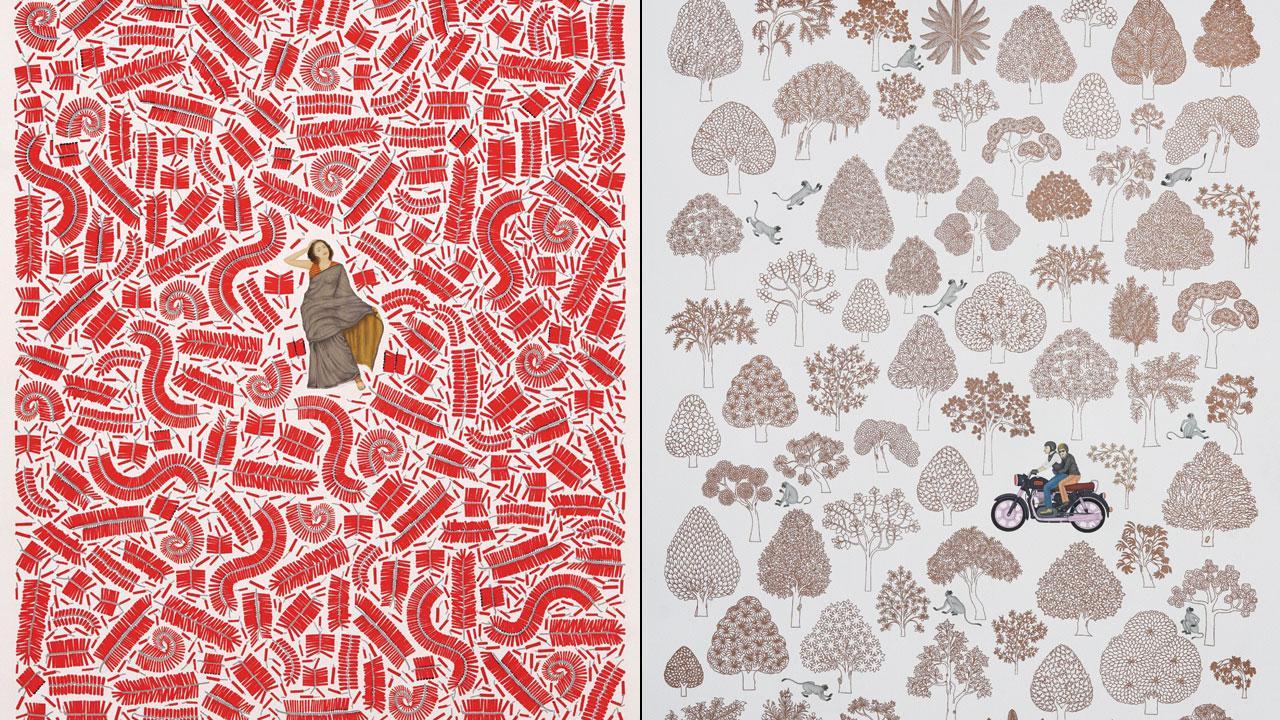
(Left) Patakha and (right) a contemporised Kota miniature by Madan Meena
Today Kota in Rajasthan might be famous, or infamous, for its many ambitious and aspiring engineering students solving complex calculus. But once upon a time, it housed artists and weavers who created visuals of splendour. Starting tomorrow, visual artist and researcher Dr Madan Meena will be part of a two-week exhibition, co-hosted by the Datri Foundation, that brings together the art of Kota miniatures and Kota Doria, alongside Sanjhi creations from Vrindavan.
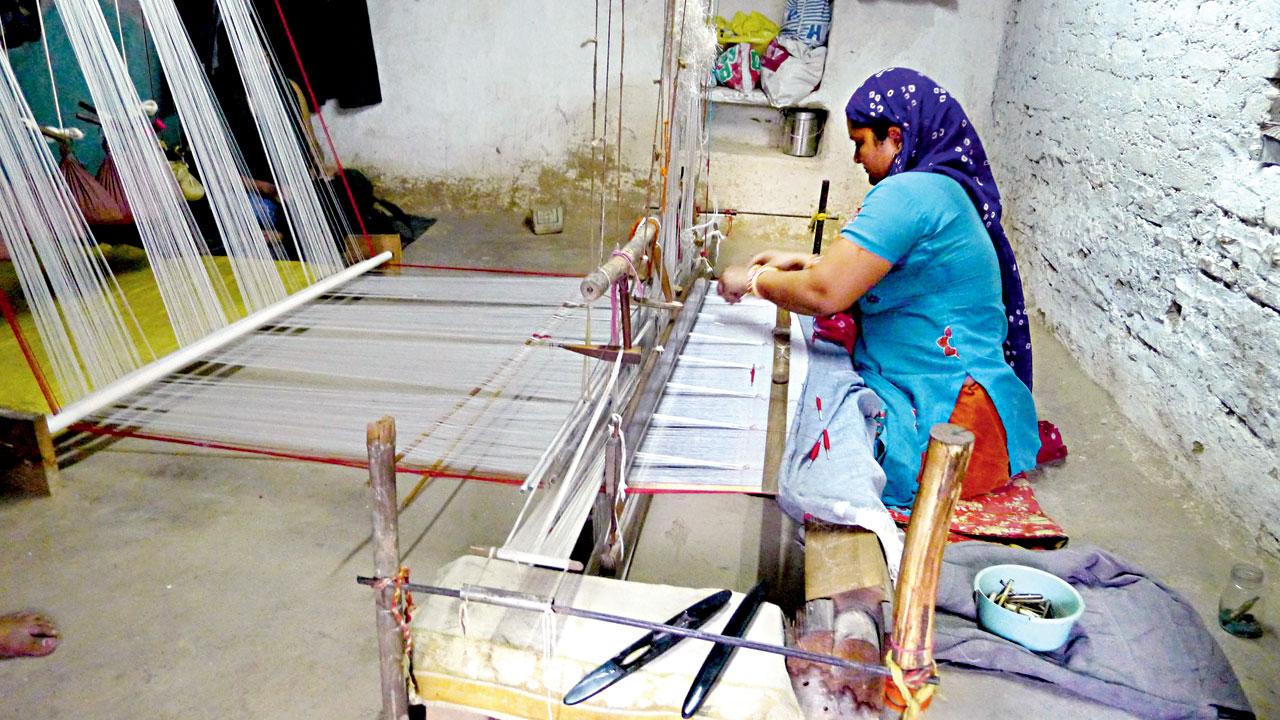
A traditional weaver works on a Kota Doria pit loom
Woven with history
Born in Kota, Meena’s artistic journey began with textiles. This introduced him to the traditional weaving art of Kota Doria. “It is a fine, light and airy textile made of silk and cotton,” he says. “In the 17th century, Rao Kishore Singh Ji of Kota invited several Ansari weavers from Mysore to the kingdom. This was the reason for the cloth’s original name, Kota Masuria,” he reveals. Weaving fine cloth requires humidity that prevents threads from breaking on the loom. So, the weavers settled in a town close to a river. “These were pit looms — placed a few centimetres above the ground. The coolness of the ground and moisture in the air enables them to create such fine cloth,” Meena points out.
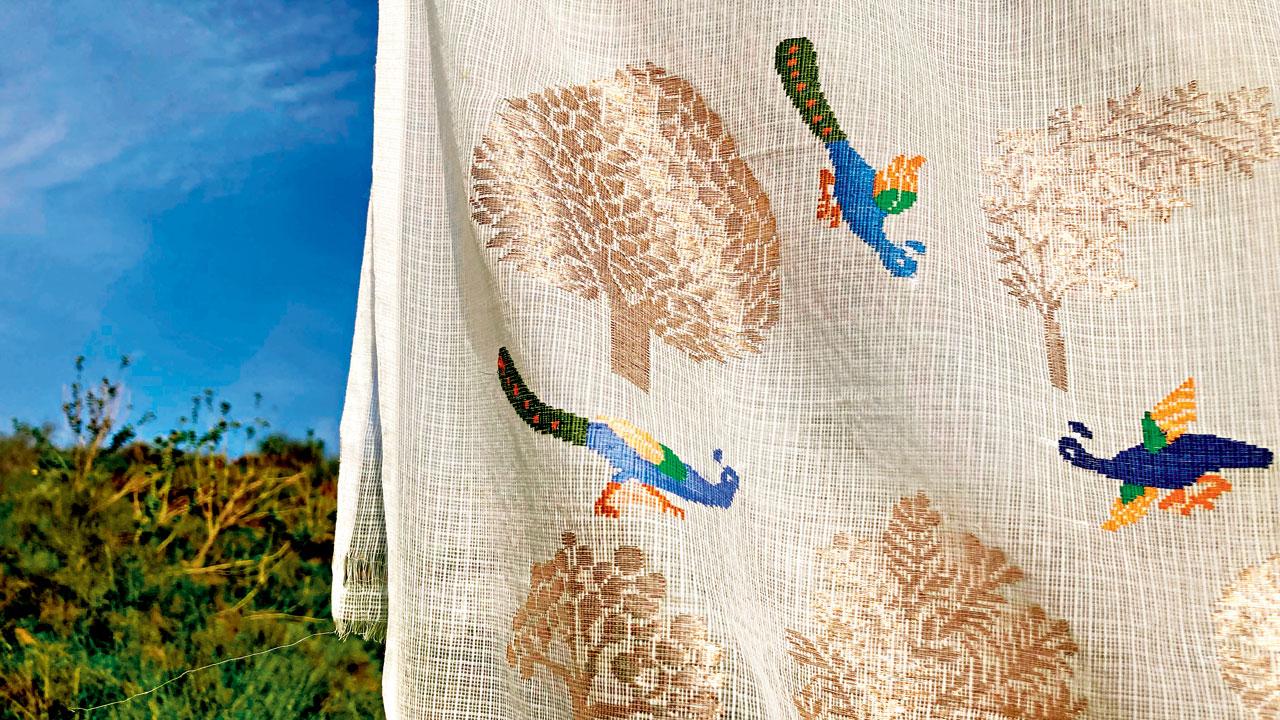
A Kota Doria cloth with motifs inspired from miniatures
Over the years, this industry is slowly fading. The artist points to the decline of a similar tradition — Kota miniature art. “Kota Bundi is a tradition that traces back to the Jain miniatures of the 7th century. With the arrival of the Mughals and influences from Persia, a new Rajput painting tradition emerged,” he remarks. The Kota Bundi style is defined by its inclusion of wildlife, flora and fauna. Today, Meena adds, the art is only used to create copies of, or to restore ancient creations.
Dexterity in colour
For Katyayani Agrawal, founder-trustee of Datri Foundation, her interest in the traditional Sanjhi art of Vrindavan follows a similar theme. Sanjhi art is practised as a religious and traditional art form. “The Vedhi Sanjhi is practised by temple priests. It is a complex Rangoli made of dry powder to create images of Radha,” she says.
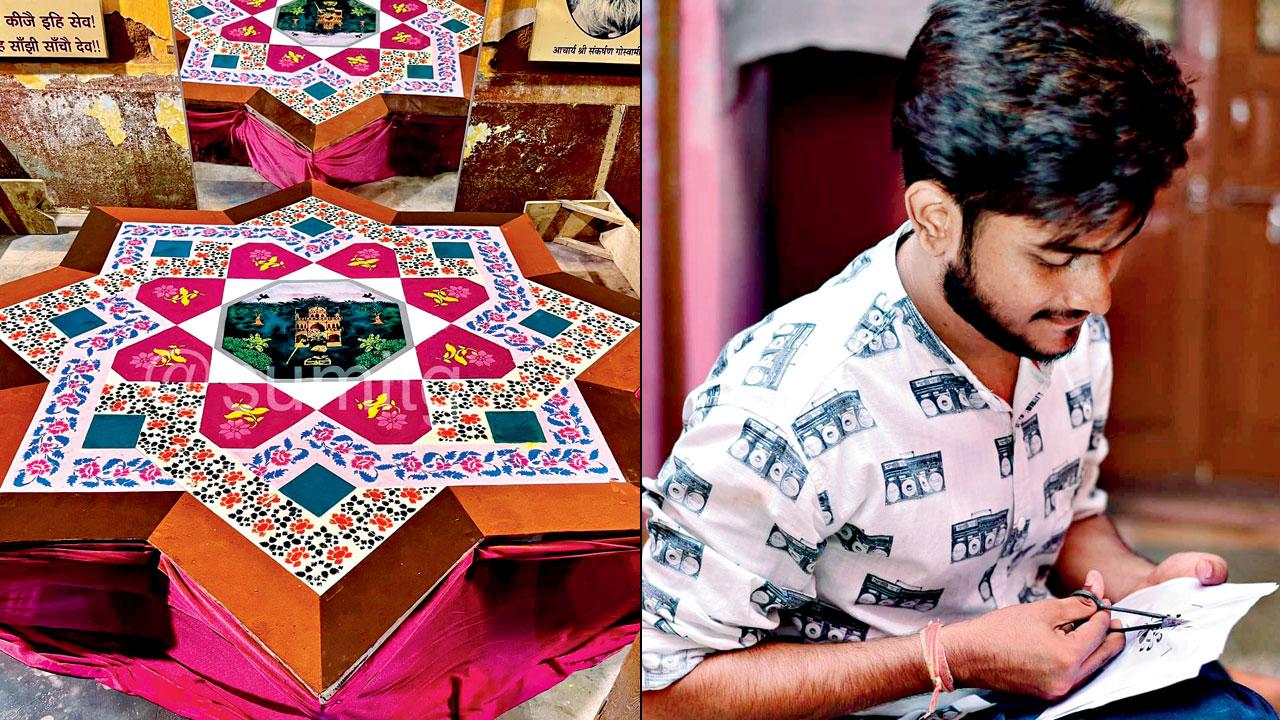
A Vedhi Sanjhi; (right) Ashutosh Verma cuts out a Sanjhi stencil
The other form is the water Sanjhi where artists create layers on a water surface using stencils. “It is a time-consuming art, and requires extreme dexterity,” Agrawal reveals. The stencils used to create these artworks are made by artisans known as Sanjhi khakha. “They are handcrafted to the requirements of the artists, and are an art form by themselves. Sadly, only two families in the region practise the technique,” she shares.
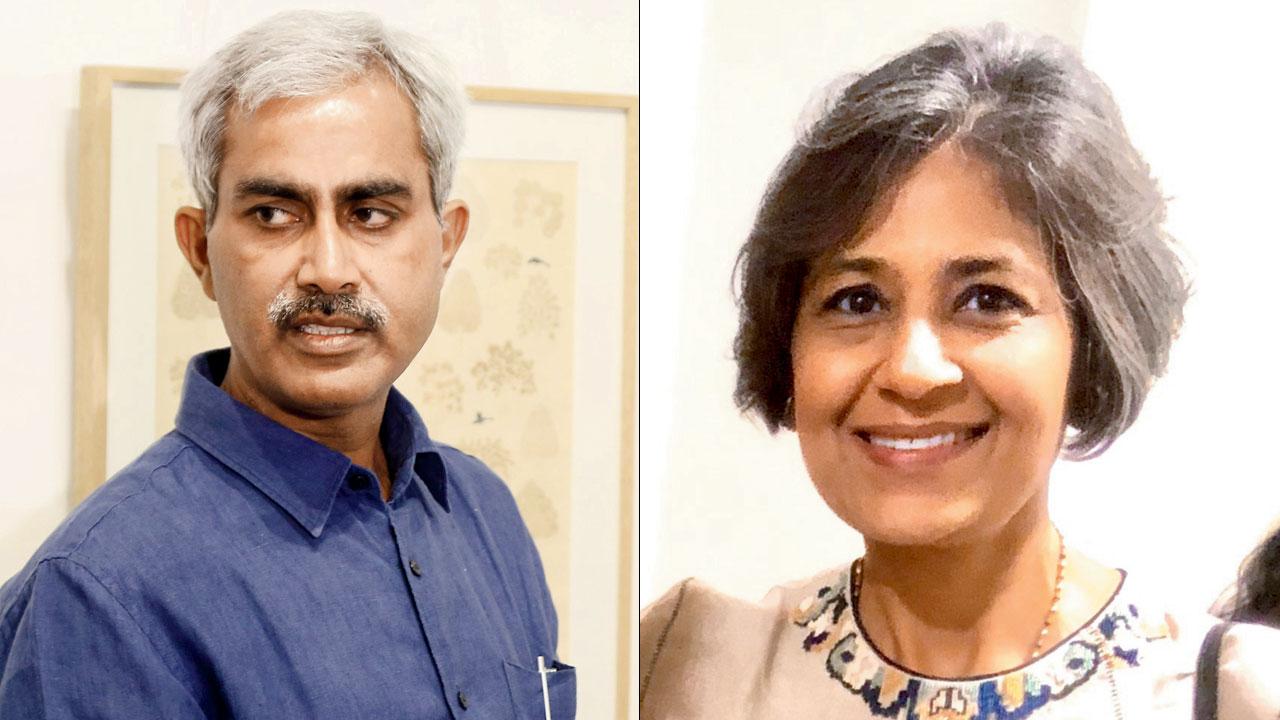
Madan Meena and Katyayani Agrawal
Fading with time
Both art forms are at a critical juncture. The need to offer them a new expression led Meena to use Kota miniatures in his practice. “It is important to develop new expressions aligned to a modern generation. If you keep creating a Maharaja ki sawari, a younger generation would not be interested, or find context in it,” he says. In his miniatures, the nayika finds a modern expression through a selfie or bike rides through the forest. This is not without challenges. Agrawal shares how the Sanjhi artists were initially dismayed at changes to their traditional motifs during her early interactions eight years ago. “For them, these were sacrosanct. It took us years of coaxing to help them understand the need to change,” she shares.

A water Sanjhi artwork
United in art
The exhibition this week will bring together these diverse forms. Apart from an artwork that blends Meena’s Kota miniatures and Sanjhi creations, there will also be over 30 textiles woven with motifs of Kota miniatures created by Meena in collaboration with master weaver Rameezuddin, 14 canvases, 20 Sanjhi khakha (stencils) and four Vedhi Sanjhi creations transferred to the canvas as well. “Madanji also plans to collaborate further with the Sanjhi artists in the future, and we hope disseminating the knowledge about these art forms, their history and intricacy will ensure their survival in a new age,” Agrawal remarks.
From: August 24 to September 6; 11 am to 7 pm
At: F11, first floor, Laxmi Mills Estate, Shakti Mills Lane, Mahalaxmi.
Call: 9920801512
Also Read: A new research project aims to compile oral histories of Bhendi Bazaar
 Subscribe today by clicking the link and stay updated with the latest news!" Click here!
Subscribe today by clicking the link and stay updated with the latest news!" Click here!










